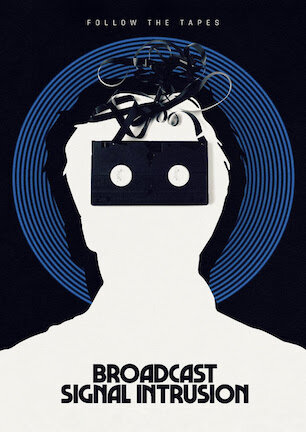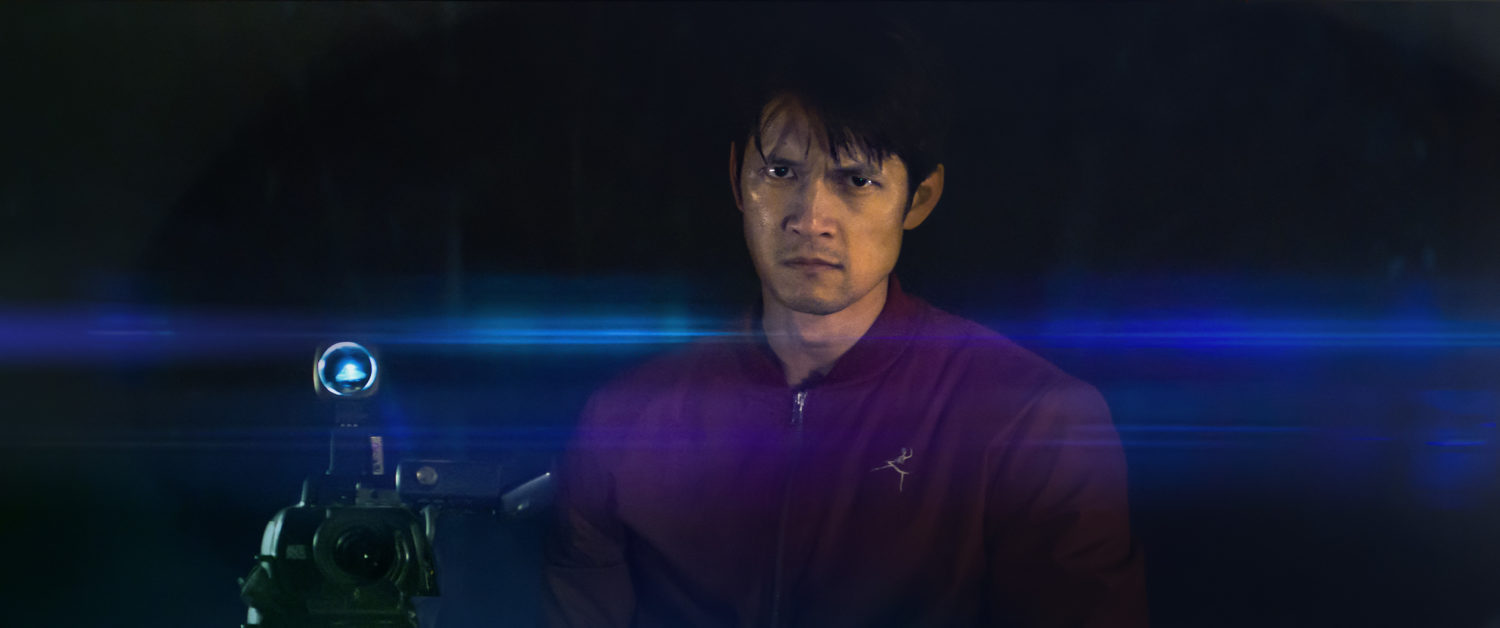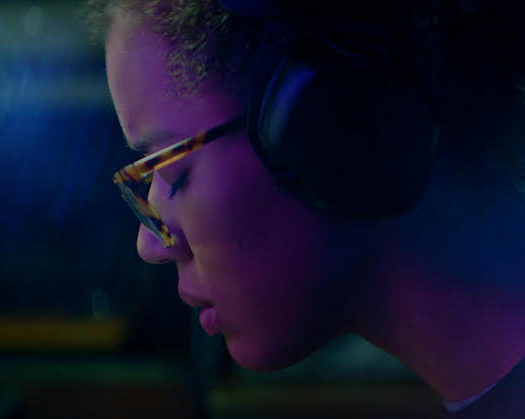In Chicago during 1987, there were multiple instances of strange broadcast highjackings affecting different television stations. During these intrusions, a man wearing a Max Headroom mask was seen against a moving background of what appeared to be corrugated sheet metal. Nonsensical actions followed, such as throwing soda cans at the camera or being spanked by another figure with a flyswatter. The soundtrack to these images were discordant noise and altered speech. If there was a reason behind these incidents, it wasn’t deciphered, and the perpetrators were never identified. These incidents, one of which is linked below, serve as a major inspiration for Jacob Gentry’s Broadcast Signal Intrusion.
Gentry sets the film’s events in 1999. Harry Shum Jr. portrays James, a video archivist struggling to cope after his wife disappears. When he’s not surrounded by monitors and videocassettes at his job or his apartment, James spends his times at support groups filled with others experiencing similar loss. One day at work, while reviewing a seemingly mundane broadcast, James comes across an instance of the eponymous broadcast signal intrusion. On the screen, an unnaturally stiff female figure stands in a room. Though the figure appears human, there is something off. As the camera gives us a closer view, it becomes obvious that this face is a rubber mask, and its movements seem mechanical. Strange noises and distorted speech accompany the figure’s jerking motions as it appears to scream. Almost as quickly as the pirate broadcast began, it is over.
James is unsure of the intent or meaning behind the strange broadcast, but he becomes fixated upon it. He pores over the archives, reviewing numerous news recordings discussing the incident. During his research, James discovers that an important tape with another of these pirate broadcasts is missing from the archives, and is told that it was seized by the FCC. This only furthers James’s interest. He continues searching for the footage, even after being told that such requests are flagged and reported to the FBI.
plays out like a vintage 90s low-fi techno-thriller
A fellow video obsessive identifies the intrusions as the “Sal-E Sparks incident,” taking its name from an in-movie sitcom called Stepbot, about a robot housewife and homemaker. James uses this info and starts researching the intrusions, as well as others around the country. The film goes all-in on the 90s-style internet research, which will likely bring a smile to viewers who can remember the early days of the web.
Before long, James discovers a possible connection between the pirate broadcasts and a number of missing women in the Chicago area. He finds himself followed, encounters a cast of questionable characters with dubious motivations, and gives the audience just enough reason to wonder whether his mental state makes him an unreliable narrator. Broadcast Signal Intrusion plays out like a vintage 90s low-fi techno-thriller, albeit one influenced by films from other decades, both before and after. Throughout the film, I found myself drawing comparisons to Zodiac, 8mm, and Videodrome, among others. Shum’s performance is equally committed as the leads in those films, which is important here since so much of the film rests on his shoulders.
From the faded 90s aesthetic, to its dated technology, to its use of multiple monitors and split screens, Broadcast Signal Intrusion is without a doubt a visually impressive film. And that’s before you even consider the intrusions themselves. The pirate broadcasts crawl under your skin with their unsettling sights and cacophonous sounds. These intrusions were created by special effects artist Dan Martin, whose work was recently seen in Possessor. There are a couple of aspects that I found reminiscent of that film, though they fit fully within the world of this film. Broadcast Signal Intrusion isn’t an overly gory film. Most of the effects work is unnerving rather than horrifying, but when the blood does flow, it packs an unexpected punch.
Broadcast Signal Intrusion is without a doubt a visually impressive film
Ben Lovett’s score uses plaintive trumpet themes and claustrophobic strings that seem fitting for a detective story. By the film’s end, the score becomes more rattling, seeming at times in peril of collapsing upon itself. Lovett is an extremely versatile composer, and I always pay attention when I see his name attached to a film.
There are a few factors that will likely determine your overall enjoyment of Broadcast Signal Intrusion. First and foremost is how intriguing you find the seed idea of the film. For me, that was an easy sell. Second is your degree of interest in an analog-style 1990s thriller. Once more, I’m on board. The final element is how you feel about a potentially unreliable protagonist, some unanswered questions, and certain ambiguous story threads. As the credits rolled, I found myself thinking that I would have liked a little more clarity to the ending—but I enjoyed the journey the film took me on, and I was already looking forward to revisiting it to try to puzzle out more of its secrets.
Broadcast Signal Intrusion had its world premiere at SXSW Online 2021 on Tuesday March 16, 2021.

‘Broadcast Signal Intrusion’ gets under your skin with vintage 90s thrills [SXSW Online 2021 Review]































